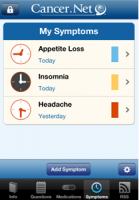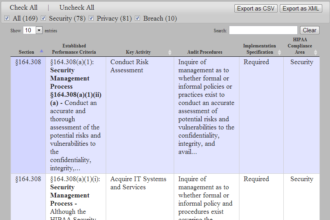Modern medicine has brought some amazing technological advances. But at the end of the day, the most powerful medical tool remains the old-fashioned one: expert clinicians with the knowledge to evaluate, monitor and care for patients.
The problem: how do you get medical expertise to all of the places it’s needed? One growing answer: Telemedicine.
Modern medicine has brought some amazing technological advances. But at the end of the day, the most powerful medical tool remains the old-fashioned one: expert clinicians with the knowledge to evaluate, monitor and care for patients.
The problem: how do you get medical expertise to all of the places it’s needed? One growing answer: Telemedicine.
Telemedicine encompasses a range of new applications, but at its core, it’s about using video communications to bring physician expertise to remote places where doctors can’t easily go themselves. As broadband networks become faster and more widespread, hospitals and other organizations are using telemedicine in unique ways.

A Fully Staffed Hospital with No Patients
Lindsay Abrams at The Atlantic recently published a story about the Avera Health Network, a long-distance critical care center in Sioux Falls, South Dakota. A full staff of doctors reports to the care center every day – even though the facility sees no patients physically on site. Instead, the center uses telemedicine technology to provide expert clinical assistance to more than 70 rural communities in the surrounding four states:
“In these small-town hospitals, which often have 25 or fewer beds, South Dakota’s largest city is the closest available source of comprehensive healthcare. The people who choose to live in small, geographically isolated communities throughout the Midwest are used to making the trek — long car rides come standard with country life. But during emergencies, the up-to 200 miles to Sioux Falls becomes very, very far away.
“But when the call comes in the middle of the night, with the push of a button — mounted right on the ER’s wall — the nurses on-duty are able to connect with ER doctors in Sioux Falls, who have been waiting, in their patient-less hospital, for their call.”
The Avera Health Network uses high-definition video conferencing and other network tools to provide a variety of telemedicine services to remote clinical locations, including specialist consultations, remote monitoring of intensive care unit (ICU) patients, pharmaceutical support, and more. The network is now expanding to other applications, including supporting nursing homes and prison infirmaries. According to Abrams, the programs are yielding major results:
“As of October, they report an 18 percent decrease in ambulance and helicopter transfers to major hospitals, equating to $6.6 million saved. What’s more, every time they’re able to maximize a small community’s ability to care for its patients on-site, they’re keeping health care dollars in the local economy. In the long run, they hope for the programs to be self-sustaining.”
Treating Strokes
Telemedicine is still a young field, but one of the early areas where it has shown a great deal of promise is in treating stroke victims. This is because during a stroke, every second literally counts: the sooner medical centers can draw on the expertise needed to diagnose and begin treating stroke, the more of the brain they can save – and the more fully the patient will likely recover.
The Mayo Clinic has been a pioneer in “telestroke” applications:
“In telestroke care, the use of telemedicine platforms or robots located in a rural hospital lets a stroke patient be seen in real time by a neurology specialist who typically is working from a desktop or laptop computer in Phoenix. The Mayo Clinic stroke neurologist, whose face appears on a computer screen, consults with emergency room physicians at the rural sites and evaluates the patient.
Patients showing signs of stroke can be examined by the neurologist who can also view scans of the patient’s brain to detect possible damage from a hemorrhage or blocked artery. If necessary patients can be administered clot-busting medications within the narrow window of time necessary to minimize permanent injury to the brain.”
Sara Jackson of FierceMobileHealthcare also reported on the use of remotely controlled telestroke robots by the Mercy Telehealth Network in California to bring stroke specialists’ expertise to smaller community healthcare facilities.
“Used exclusively to treat stroke patients in the emergency room, the robots are 5 feet, 3 inches tall and cylinder-shaped, with large flat-screen monitors where a human’s face would be. Neurologists connect to the robot remotely and can both see and talk to the patient through video cameras.
“Through the robotic connection, specialists can see patients immediately to determine whether to administer clot-busting drugs, which have only a three-hour window of opportunity to be effective, according to coverage in the Sacramento Business Journal.
“‘If you’re a patient with stroke symptoms, you probably want a stroke expert at your bedside. I can be there within five or 10 minutes [via robot], and it may be a 40-minute drive to that location–or several hours. We are compressing time and space and, in doing so, improving quality of care,’ Alan Shatzel, medical director of neurology for the Mercy Neurological Institute, which operates the robots, told the Journal.”
Lowering Healthcare Costs
Telemedicine programs like these can be a boon to patients. But, they can also mean big savings for participating hospitals and clinics. Susan Hall at FierceHealthIT wrote last year about a Mayo Clinic study analyzing the savings of telestroke services:
“Compared to hospitals with no telemedicine network, the model estimated that each year, 45 more patients would be treated with intravenous thrombolysis, and 20 more with endovascular stroke therapies–leading to roughly six more independent patients being discharged home, according to the researchers. Those discharges saved each rural hospital more than $100,000, according to an accompanying announcement.”
We are still in the early stages of the telemedicine revolution, but as technologies and broadband infrastructure evolve, the possibilities seem limitless.







